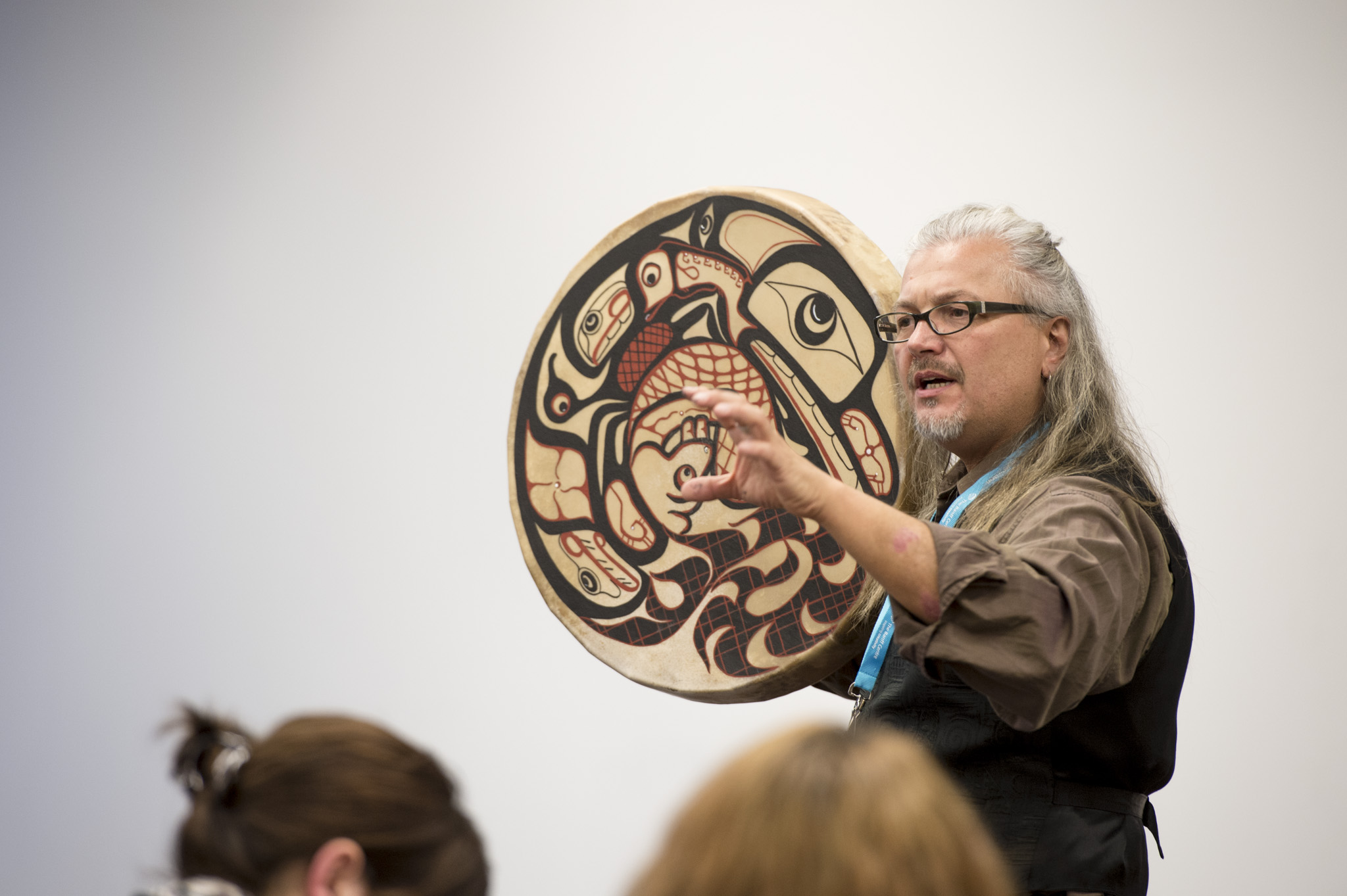The Art of Leadership and the Leadership of Art

If you are asked to imagine an Indigenous leader, what image comes to mind? Is it politicians, entrepreneurs, or bureaucrats? I often see great Indigenous artists. Most people do not view their artists as leaders, but I am a strong advocate for the idea. I live my life as both leader and artist, both a part of who I am, and I suggest that Indigenous peoples must begin to look at their artists as leaders.
In modern thinking, people have one job, specializing in one area. They are leaders, bankers, academics or artists. Work roles define them, and limit them. But we can foster many roles and practices, which help us to become richer leaders.
As Indigenous peoples, we must take on the roles that the community needs of us, and in most cases, that is the activity we do best. I was taught that I must be prepared to do what is necessary and use my abilities for the benefit of my community, and if I am a skilled artist and I can use that gift to inspire a vision of the world. By allowing others to see my vision, through my art, I can hopefully provide inspiration and hope about the future.
I was taught that Indigenous artists are leaders, but also much more. They are teachers and students, gathering traditional knowledge, stories and methods in order to create new, inspiring works. Artists represent a traditional Indigenous approach to art, contemporary presentations of what it means to be Indigenous, or a fusion of the two. Artists anchor us to the past and transport us to the future. They get us to think about the best and worst of humankind and inspire us to think about the direction we are headed.
Indigenous leaders, like Indigenous artists, are showing how they see the contemporary world and are creating visions for the future. Many of the best leaders also look to the past ways of governance and leadership, ways of knowing and being, and fuse them with the modern competencies of leadership to create inspirational visions for their communities. My grandfather Frank King explained leadership to me this way: “A leader has a vision and follows it. A leader allows others to follow them following their vision.”
The mainstream speaks of artists as innovative, groundbreaking, pioneers. George Santayana, philosopher, poet and cultural critic, said, “An artist is a dreamer consenting to dream of the actual world.” This is similar to my grandfather’s description of a leader. In our modern world we hear much of the “art of leadership” in books, seminars and classes. Commentators like Henry Mintzberg argue that management techniques are too narrow and limiting for leaders now dealing with complexity, chaos and constant change. In fact, leadership development practitioners are turning to artists for insights into creativity and innovation.
Many Indigenous leaders have led struggles for the recognition and acceptance of Indigenous culture, traditions, rights and ideas in Western society. This movement, bringing our culture to mainstream society, has also been led by Indigenous artists. Bill Reid, George Hunt, and Frieda Dessing brought West Coast art to the Western world. In eastern Canada, the Indian Group of Seven shared their Indigenous vision of the world. Today, the list of Indigenous artists creating new and innovative ideas about our past, present and future is staggering. It would be well worth the effort to search them out and explore their opinions, methods and visions, and share in their dreams of making the world a better place.
Don McIntyre is an Ojibway of the Temiskaming First Nation, a lawyer, teacher, lecturer, artist, and faculty member with Indigenous leadership programs at the Peter Lougheed Leadership Institute. He practices in the areas of Aboriginal law and governance, small business for Aboriginals, and tries to incorporate traditional knowledge and teaching into his practice.